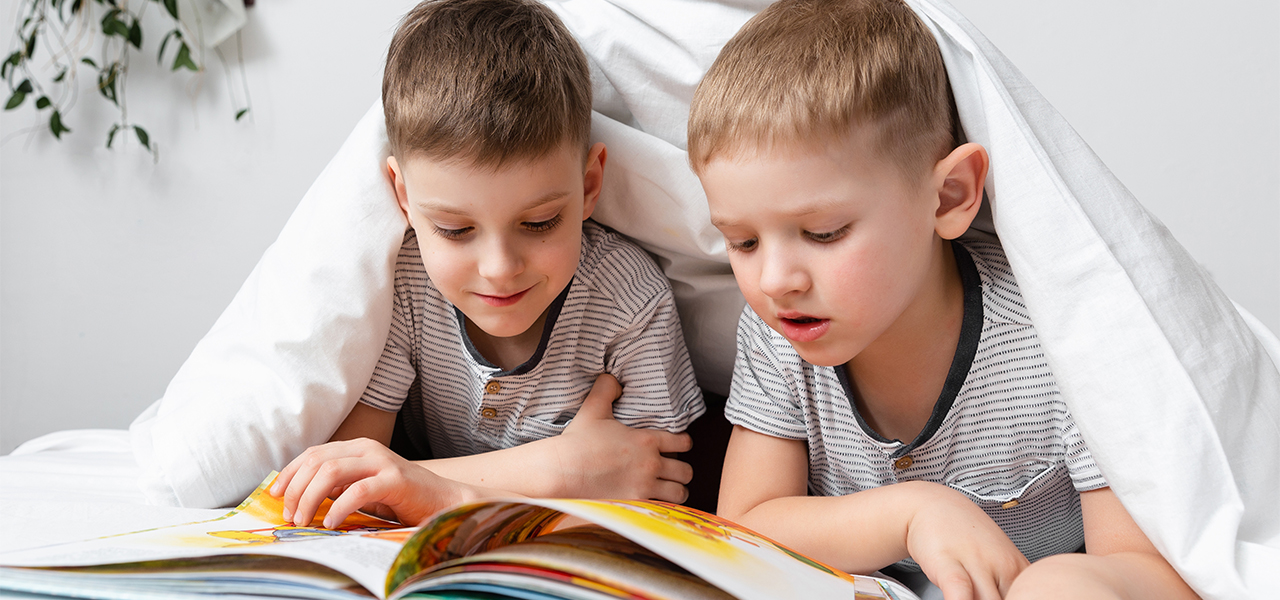How does the phonics program Little Stories for Little Folks compare to Little Angel Readers?

Question
We have had good success with Little Stories for Little Folks with our first son who is finishing up first grade.
Our 4-year-old is showing amazing ability and has learned to read by himself. We have the first Little Angel Readers (red one) that came with a set of books we got used on eBay one time. We are thinking of getting the entire Little Angel Readers set with workbooks to start him in the fall for Kindergarten. (He will be 5 in October.)
So our question is: Would Little Angels Readers be an okay substitute for Little Stories for Little Folks for our second son who already loves the book? Do you recommend starting him on Little Stories for Little Folks and forgetting the Little Angel Readers?
My second son is big on actually “holding/touching” books. He is very kinesthetic/visual learner and is attracted to color, etc.
Thanks in advance for your help!
Dear Parent,
It sounds as if you have a very early reader on your hands!
The beauty of homeschooling is that one can select materials that fit the needs and abilities of each child. Little Angel Readers is a fine program. To help in your decision-making: Little Angel Readers and Little Stories for Little Folks contain almost exactly the same phonics concepts, but with differing methods of presentation. Little Stories for Little Folks presents lessons with ABC flashcards, individual booklets, workbook pages, the Name Game, and hands-on word tiles (Silly Willy Sentences) that can be manipulated and rearranged to create funny sentences for reading practice while teaching the basic concept of verbs and nouns. Little Angel Readers covers the same concepts in a standard text and workbook format.
Since your son is a very kinesthetic learner, you might consider whether the individual booklets and hands-on word tiles in Little Stories will be more attractive to him than the more standard format of Little Angel Readers. Both reading programs are in color, so either one will appeal to your son’s visual learning style. With Little Stories, both the booklets and the workbook pages are in color; with Little Angel Readers, the readers are in color and the workbook pages are in black and white.
One difference between the programs is that Little Angel Readers has stories about children in a traditional Catholic school setting with nuns as teachers, whereas Little Stories for Little Folks has stories about children who are homeschooled.
Little Angel Readers is designed to be completed by the end of second grade. Using Little Stories, students complete the same amount of material by the end of first grade and end up being at least a year ahead in their reading level. Since CHC’s second grade readers (and spelling and grammar workbooks) assume the student has completed Little Stories for Little Folks and is therefore at an advanced reading level, substituting a different reading program for Little Stories can make it difficult to use the rest of CHC’s curriculum. In your son’s case, however, this probably won’t make a difference since he is so advanced. He would probably fly through Little Angel Readers at a faster pace than most children and be ready for CHC’s second grade readers with no problem.
In sum, either reading program will work fine in your son’s case. What a blessing it is to have choices!
Hope that helps!
Dominus tecum,
Nancy Nicholson
About Nancy Nicholson
Nancy Nicholson is one of the founding authors of Catholic Heritage Curricula. Equipped with an abundance of God-given talent, a major in Secondary Education–English, and years of experience homeschooling her own children, she has written over thirty educational titles, beginning with Little Stories for Little Folks. Her unique ability to develop programs and workbooks that “fit” both advanced and struggling students is due to her experience raising children of different ability levels and learning styles: two of her children are developmentally challenged, while another went on to graduate from Cornell and is now a college professor.

